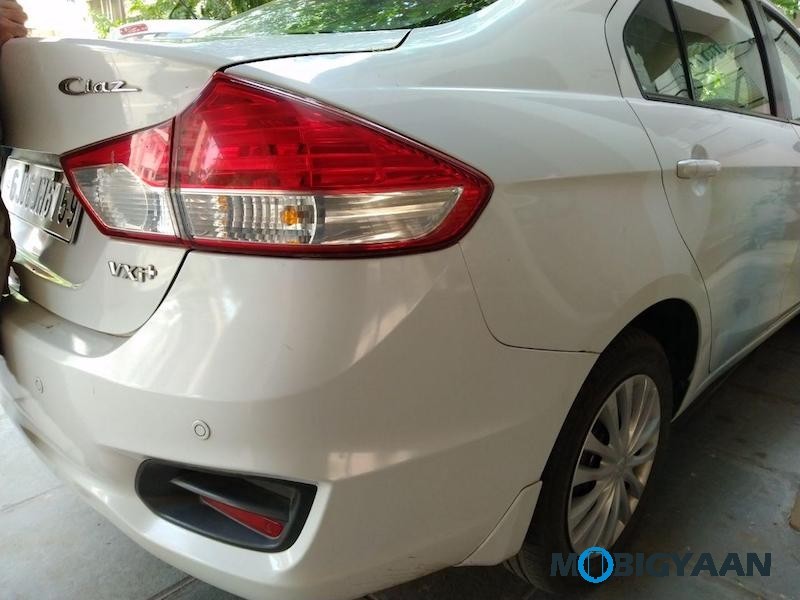ASUS is back with its ZenFone Max series, we haven’t heard since a while, now the company has brought a phone with Pro features. The ZenFone Max Pro M1 is a budget smartphone featuring dual cameras, 18:9 FullView display, Snapdragon 636 octa-core SoC and competes with the Xiaomi Redmi Note 5 Pro. here’s our ZenFone Max Pro M1 review.
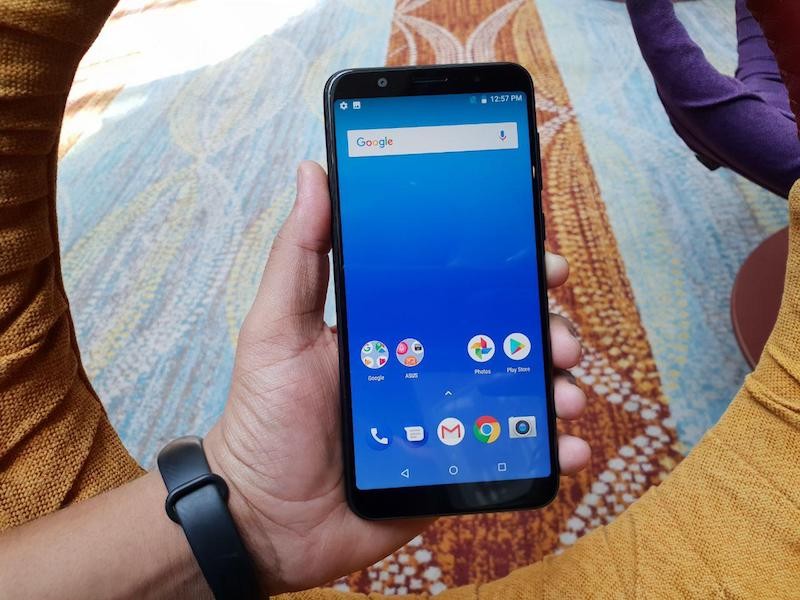
What’s in the box
- ASUS ZenFone Max Pro M1 with built-in battery
- Micro USB Cable
- MaxBox
- Charger (Output: 5V, 2A)
- SIM Ejector
- User Manuals & Warranty Information
Here’s the quick unboxing of the ASUS ZenFone Max Pro M1 below. The box contains the handset with a built-in battery, charger, micro USB cable, silicon clear case, SIM ejector, User manuals and warranty information, and MaxBox – a cardboard-based passive amplifier accessory for a solid audio experience. No earphones provided in the box, sigh.
ASUS ZenFone Max Pro M1 Specifications
- Display: 6.0-inch FullView IPS Display, Full HD+ Resolution (2160 x 1080 pixels), 18:9 aspect ratio, 2.5D curved glass
- Software: Android 8.1 Oreo
- Fingerprint Scanner: Yes, at the back
- Face Unlock: Yes
- CPU: Up to 1.8 GHz octa-core Kryo 260 processor, Qualcomm Snapdragon 636 SoC, 14nm
- GPU: Adreno 509
- Memory: 3 GB or 4 GB or 6 GB RAM, LPDDR4X
- Storage: 32 GB or 64 GB eMMC internal, expands via microSD card (dedicated slot)
- Main Camera: Dual cameras (13 MP + 5 MP), single LED flash, Dual cameras (16 MP + 5 MP) for 6 GB variant
- Selfie Camera: 8 MP (16 MP for 6 GB variant)
- Connectivity: micro USB, 3.5 mm, Wi-Fi, Bluetooth, GPS
- Cellular: 4G LTE, dual nano SIM, VoLTE-enabled
- Battery: 5,000 mAh (non-removable)
- Price: Rs 10,999 (3 GB RAM & 32 GB storage), Rs 12,999 (4 GB RAM & 64 GB storage), 14,999 (6 GB RAM, 64 GB storage, dual 16 MP + 5 MP rear cameras, 16 MP front camera)
Design, Build & Ergonomics
About the design, if we compare it with the older ZenFone Max, the design on the ZenFone Max Pro M1 has significantly changed, it offers metallic body with rounded corners. The overall design is handy, fits well in the hands, and feels a quite premium.
There’s a large 6.0-inch display with 2.5D curved glass on top. The screen has been upgraded to the newer 18:9 aspect ratio due to which the bezels are minimized and the bottom side physical navigation keys are eliminated. You will get the stock on-screen navigation on the phone.
On flipping the phone and you will find dual cameras vertically placed on the side and a fingerprint scanner at the center. Good thing that the cameras aren’t protruding, the surface is flat and clean. Talking about the cameras on the phone, the rear carries dual cameras (13 MP + 5 MP) and the front side carries an 8 MP selfie camera.
The dual cameras compete with the phones having two rear cameras on board such as the Redmi Note 5 Pro, Honor 9 Lite, Lenovo K8 Note, etc. The dual cameras offer depth mode for bokeh effect photographs and a set of other features as well.
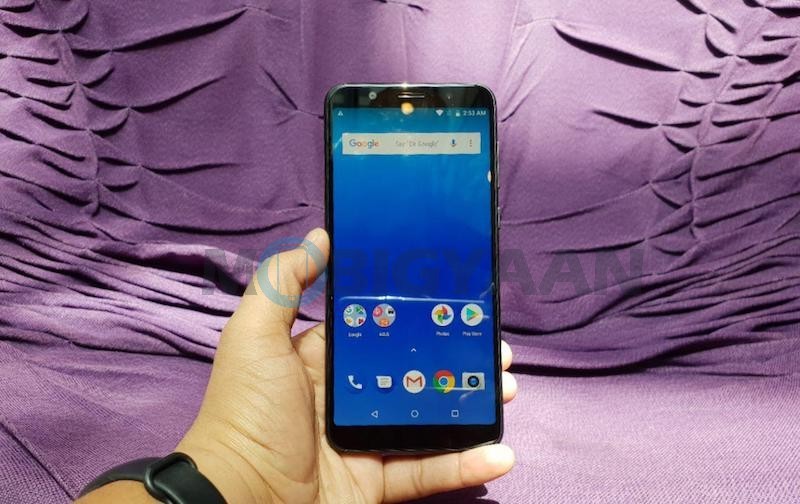
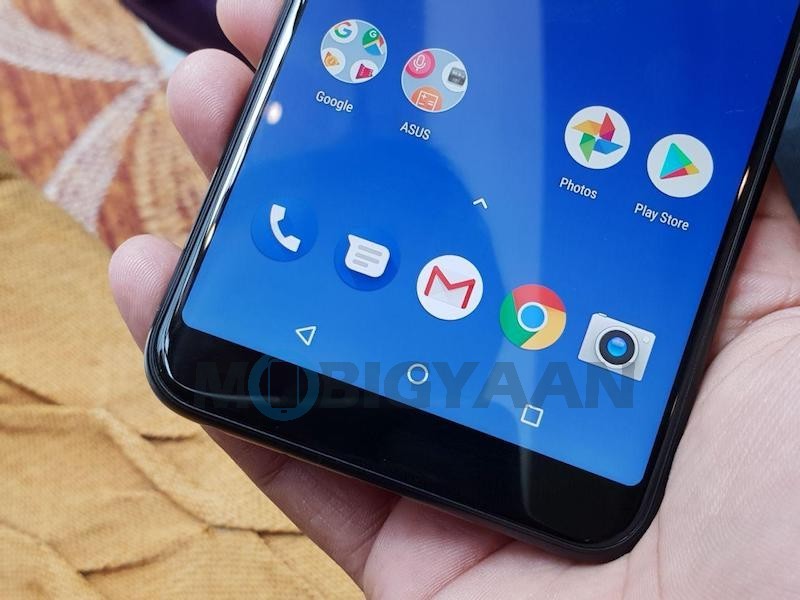

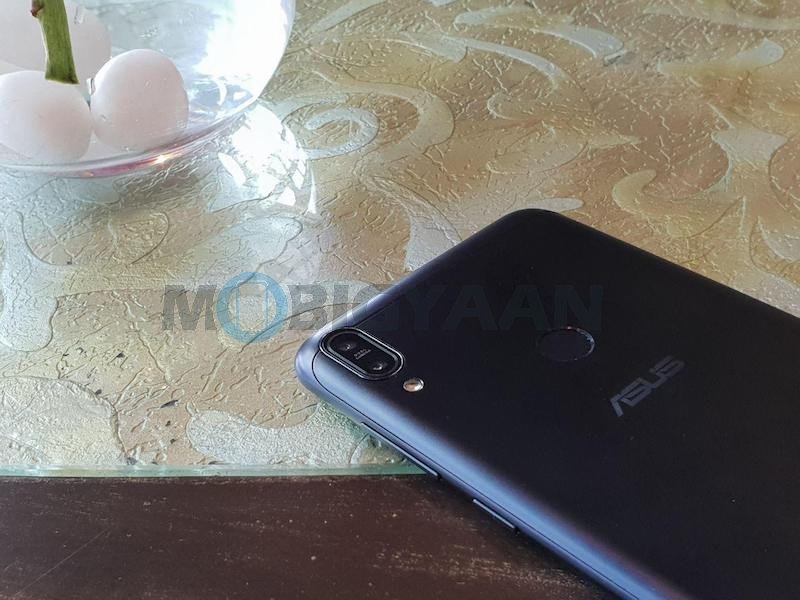
The sides offer a power button and volume buttons on the right, a dual SIM tray on the left that carries a separate microSD slot. The buttons feedback are nice, the fingerprint scanner is placed correctly, the phone is made ergonomically.
Not the type-C, the bottom offers a micro USB instead, a 3.5 mm headphones jack, loudspeakers, and a microphone while another microphone is located at the top.
Display
The ASUS ZenFone Max Pro M1 offers a 6.0-inch screen which is FullView with rounded corners inside, the panel used is a Full HD+ IPS. The display pixels is higher than many phones in the range, the display is quite bright, the brightness is sufficient and the viewing angles are good.
With the stock interface, there are less options in the display enhancements, you can control the temperature, font size and a couple of other things related to the display.
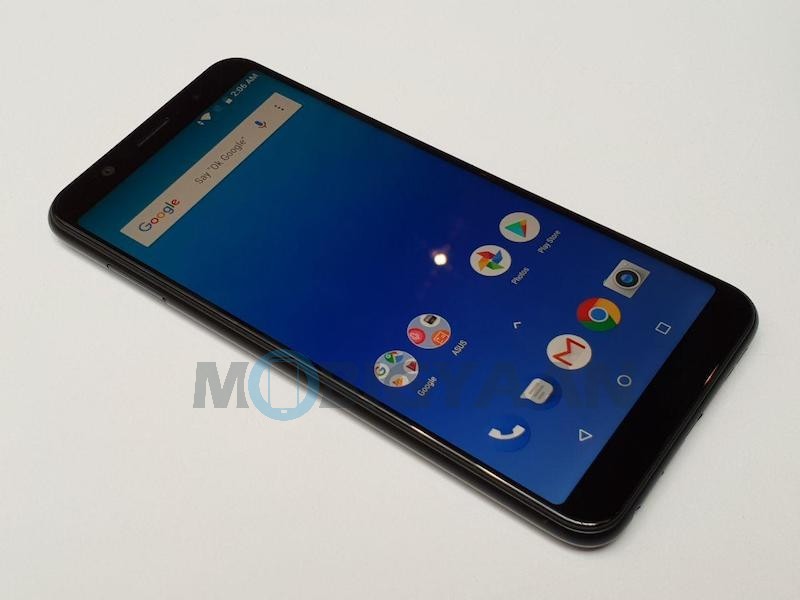
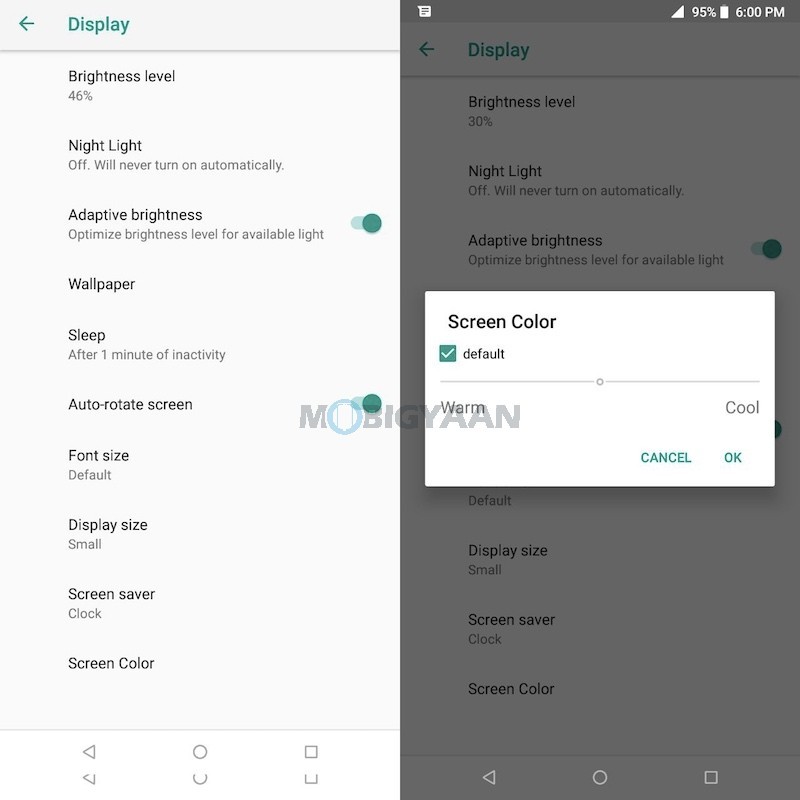
Software & User Interface
Out of the world, ASUS suddenly moved to the stock Android for the ZenFone Max Pro M1. The phone runs on Android 8.1 Oreo without ZenUI skin. Unlike the ZenUI, the ZenFone Max Pro M1 offers a pure Android experience and doesn’t consume much resources rather boosts the performance of the phone. The security patch is dated 1st April 2018.
It does sound a deal breaker when you hear stock Android and it’s updated to the latest ongoing version i.e. 8.1 Oreo. Rivals like Xiaomi Redmi Note 5 and Redmi Note 5 Pro are stuck with the Nougat update, this is where the ZenFone Max Pro M1 shines out.
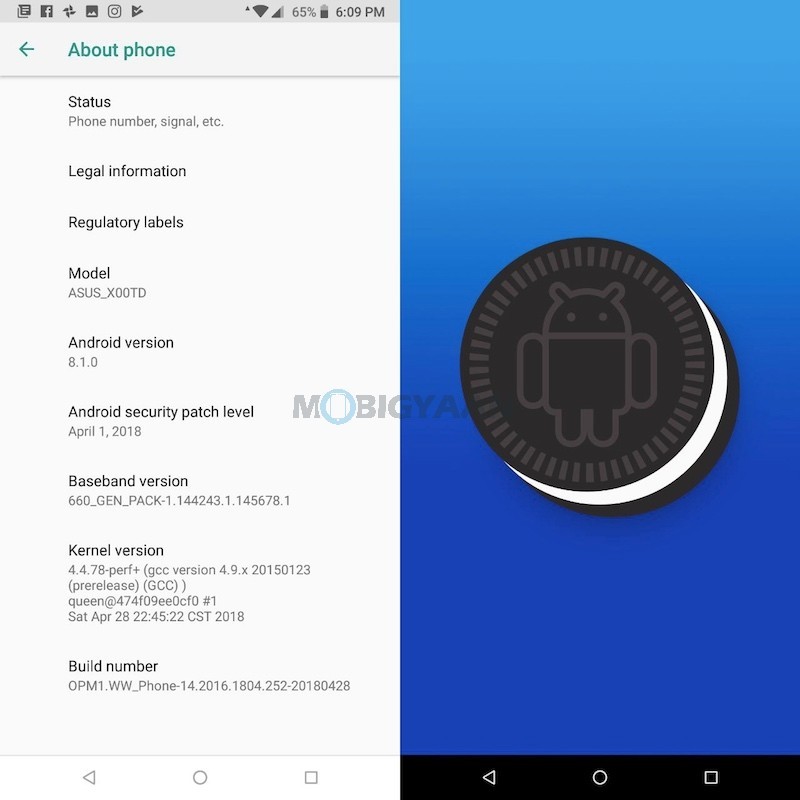
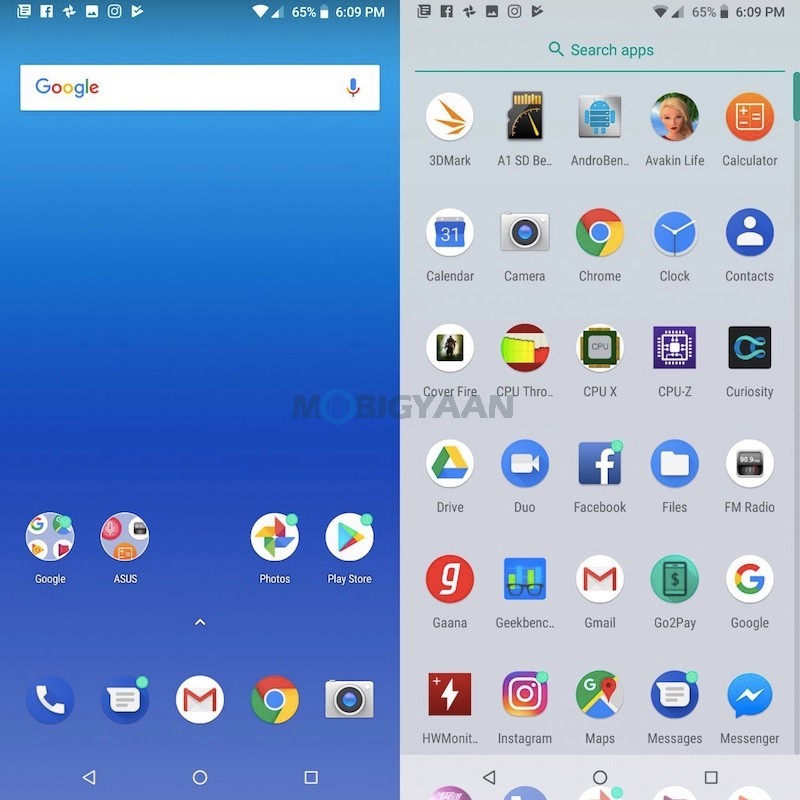
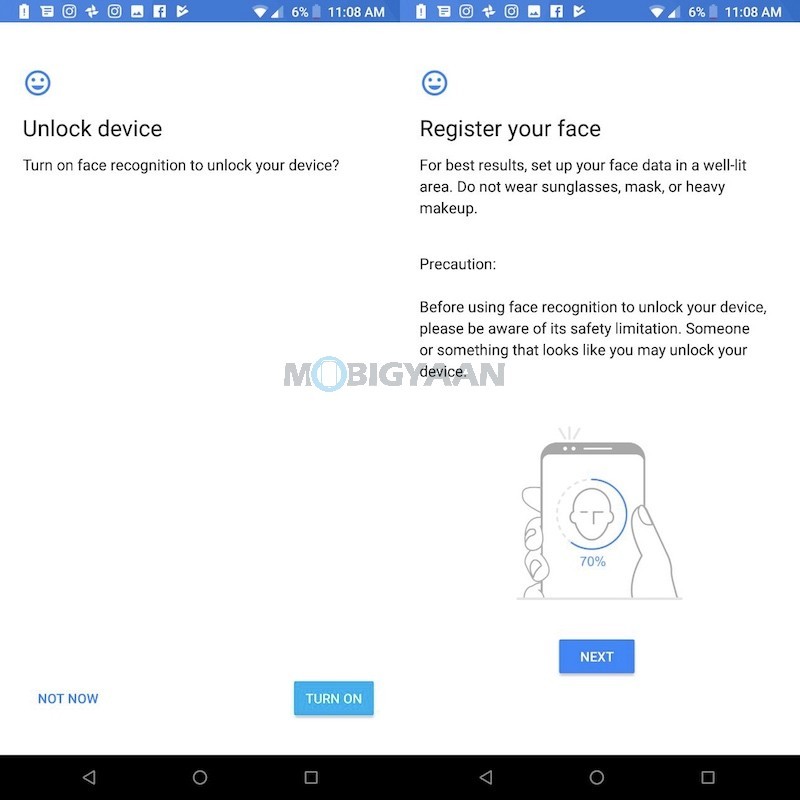

Hardware, Performance & Gaming
One of the primary features the ZenFone Max Pro M1 boasts is the newest Qualcomm Snapdragon 636 SoC packed inside. It was first seen on the Xiaomi Redmi Note 5 Pro. Hence, the ZenFone Max Pro M1 competes with the Redmi Note 5 Pro and similar devices. The performance is also compelling than the old Snapdragon 625 (Redmi Note 5), Snapdragon 630 (Moto X4), and Kirin 659 (Honor 9 Lite).
ASUS ZenFone Max Pro M1 Key Specifications
- Display: 6.0-inch FullView IPS Display, Full HD+ Resolution (2160 x 1080 pixels), 18:9 aspect ratio, 2.5D curved glass
- Software: Android 8.1 Oreo
- CPU: Up to 1.8 GHz octa-core Kryo 260 processor, Qualcomm Snapdragon 636 SoC, 14nm
- DSP Processor: Qualcomm Hexagon 680 DSP
- GPU: Adreno 509
- Memory: 3 GB RAM, LPDDR4X
- Storage: 32 GB, expands via microSD card (dedicated slot)
- Battery: 5,000 mAh (non-removable)
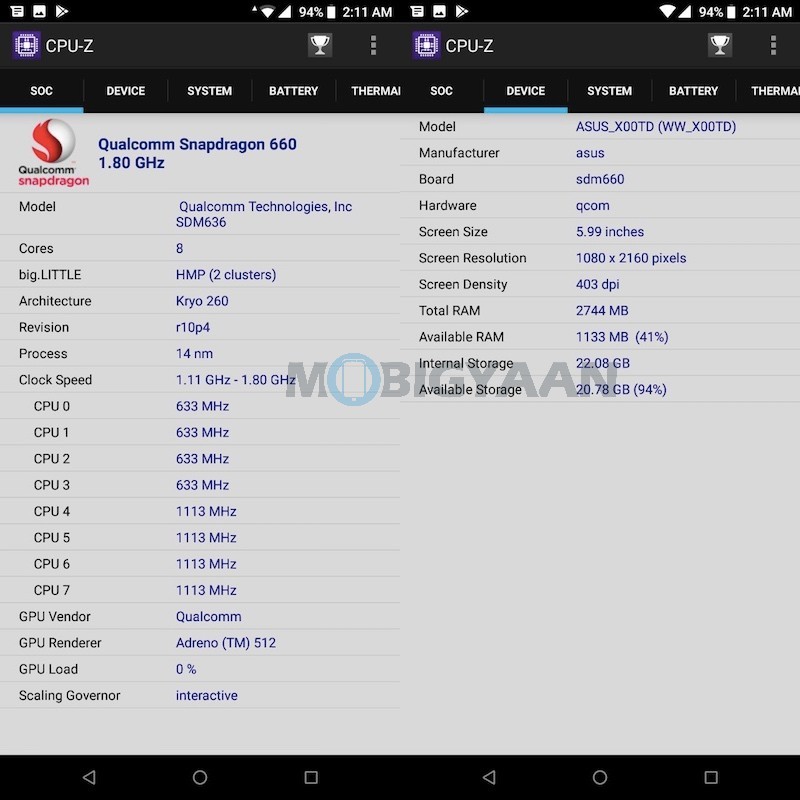
The ASUS ZenFone Max Pro M1 leads the benchmarks, it scores 112,815 points on AnTuTu, 1,319 points (single-core CPU), 4,773 points (multi-core CPU), and 4,489 (GPU) on Geekbench 4. These numbers are enough to take down most budget devices in the price range.
AnTuTu Benchmark
- 112,815 points
Geekbench 4
- 1,319 points (single-core CPU)
- 4,773 points (multi-core CPU)
- 4,489 (GPU)
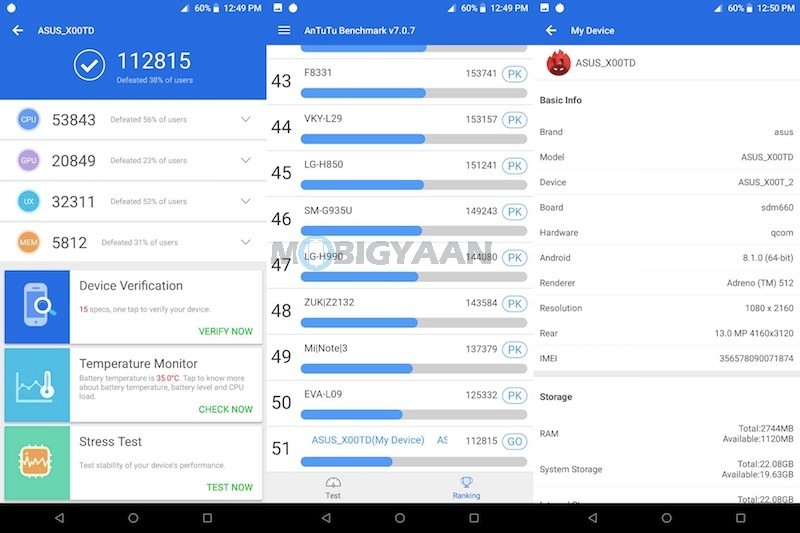
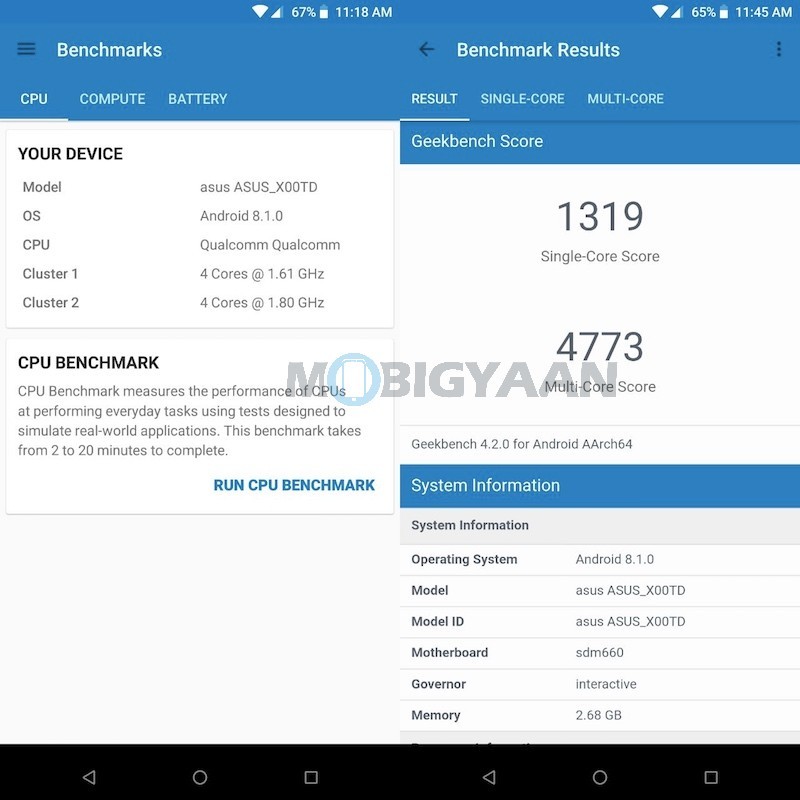
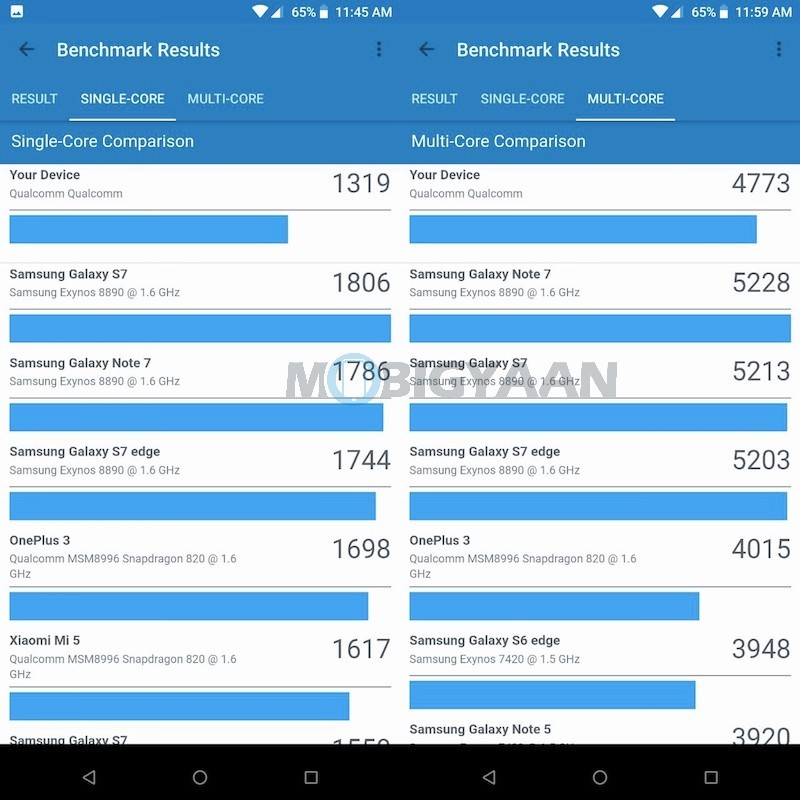
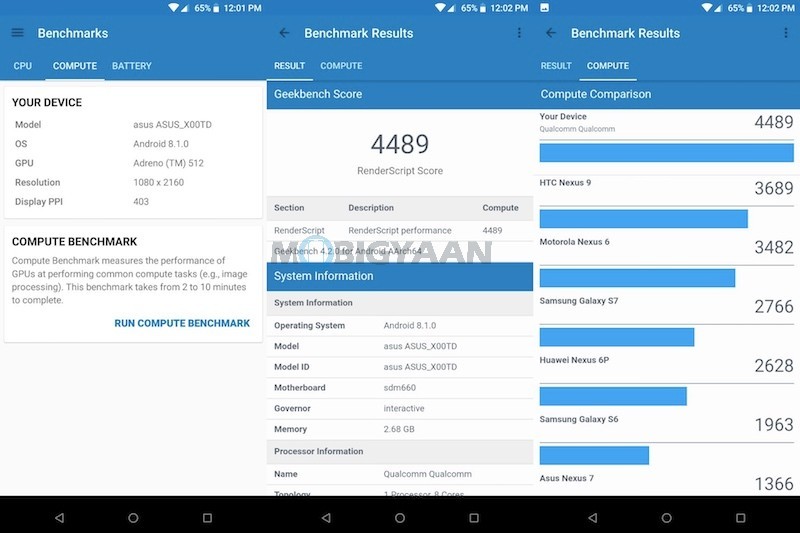
The Snapdragon 636 consisting of Adreno 512 is fast and reliable for gaming. It can play many games without any lags, we tested the Need For Speed No Limits and Cover Fire. Heating is not an issue on this phone, the maximum temperature we recorded is 41 degrees.
Games Tested on ASUS ZenFone Max Pro M1
- Need For Speed No Limits
- Cover Fire

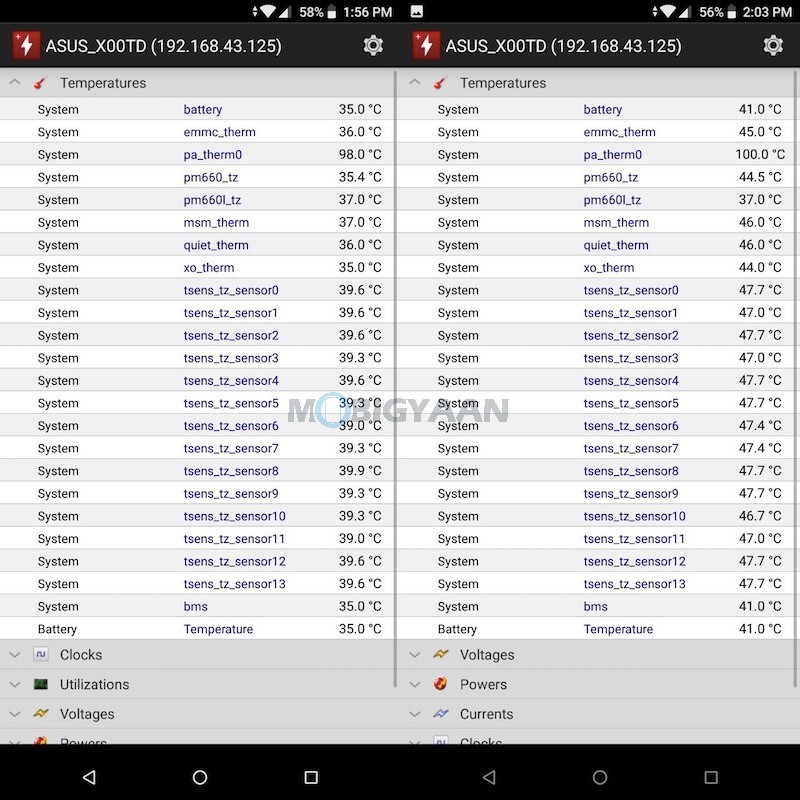
Storage & Memory
On the storage side, the ZenFone Max Pro M1 comes in three variants. The 32 GB storage with 3 GB RAM is priced at Rs 10,999 whereas the 64 GB with 4 GB RAM is priced at Rs 12,999. There’s the third variant with same 64 GB storage and 6 GB RAM with upgraded cameras, 16 MP + 5 MP dual rear cameras and 16 MP selfie camera. It is priced at Rs 14,999 available on Flipkart.
A1 SD Bench
- 247.17 MB/s (Read)
- 136.36 MB/s (Write)
- 5,754.23 MB/s (RAM Copy)
AndroBench
- 255.51 MB/s (Sequential Read)
- 126.37 MB/s (Sequential Write)
- 45.24 MB/s (Random Read)
- 12.96 MB/s (Random Write)
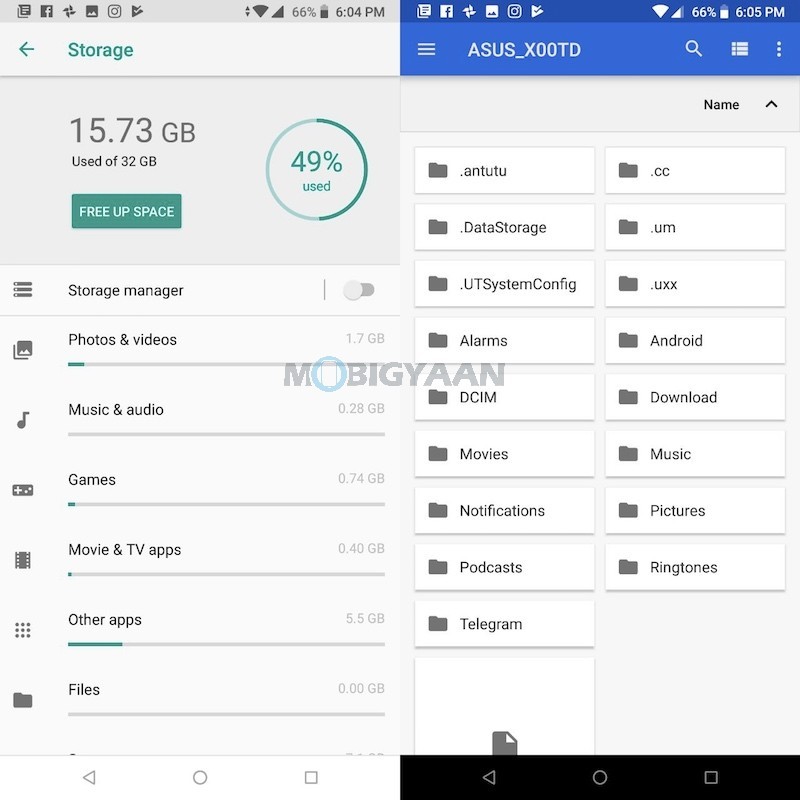
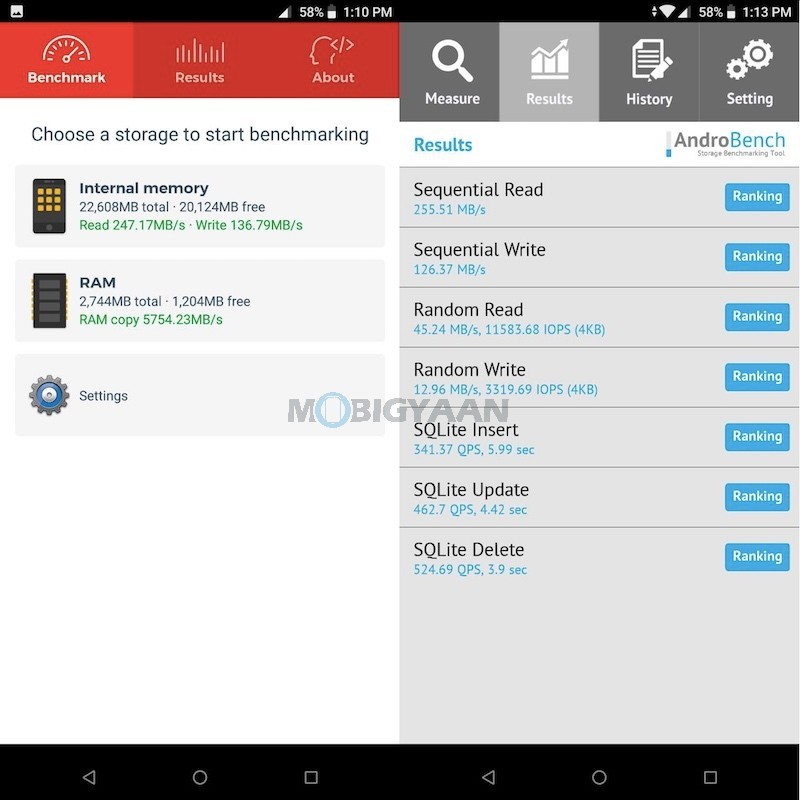
Cameras
Coming to the cameras, the rear carries dual cameras, one with 13 MP sensor and another with 5 MP sensor. The front side carries an 8 MP selfie camera. Although the camera specs look decent on paper, the 6 GB variant with 64 GB storage has upgraded cameras. The rear side offers 16 MP + 5 MP dual cameras and the front side carries 16 MP camera.
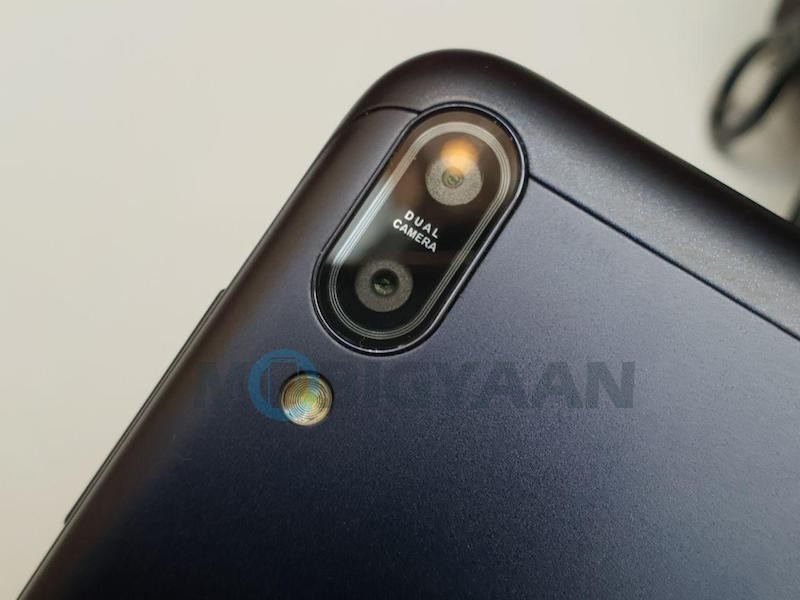
ASUS ZenFone Max Pro M1 Camera Specifications
- Camera: Dual Cameras (13 MP + 5 MP)
- Optical Image Stabilization (OIS): N/A
- Rear Flash: Single LED flash
- Features: Depth, Auto, HDR, Portrait, Landscape, Sports, Flowers, Backlight, Candlelight, Sunset, Night, Beach, Snow, Filters, Face Beauty, Face Detection, Continuous Shot, Countdown timer, Redeye Reduction, Tap to focus, Geo-tagging
- Video Recording: Up to 4K DCI video @30fps
- Front Camera: 8 MP
- Video Recording: 1080p/720p/480p videos @30fps
- Front Flash: Single LED
No wonder the operating system is stock, the camera app on the ZenFone Max Pro M1 is tweaked to achieve the ZenUI camera app. It’s not exactly a stock Android camera app, ASUS used the Qualcomm camera app and tweaked it. It offers plenty of features like Depth, Portrait, Face Beauty, Night, Filters, Redeye Reduction, and many.
The camera interface is sluggish especially when depth mode is on. This certainly can be fixed with software updates and you can expect the camera to improve a bit.
The quality of the camera isn’t that bad for the budget segment, however, when compared to the Redmi Note 5 Pro, we think the dual cameras emerge with better quality. Also with the 20 MP selfie camera versus the 8 MP on the ZenFone Max Pro M1, Redmi Note 5 Pro has the lead. If you are looking for a camera between these two, we would certainly recommend the latter.
The daylight shots appear good given the price, but you can’t expect it to perform better in low-lights. We have seen cameras performing better in low lights, the Honor 9 Lite is far better in terms of cameras.
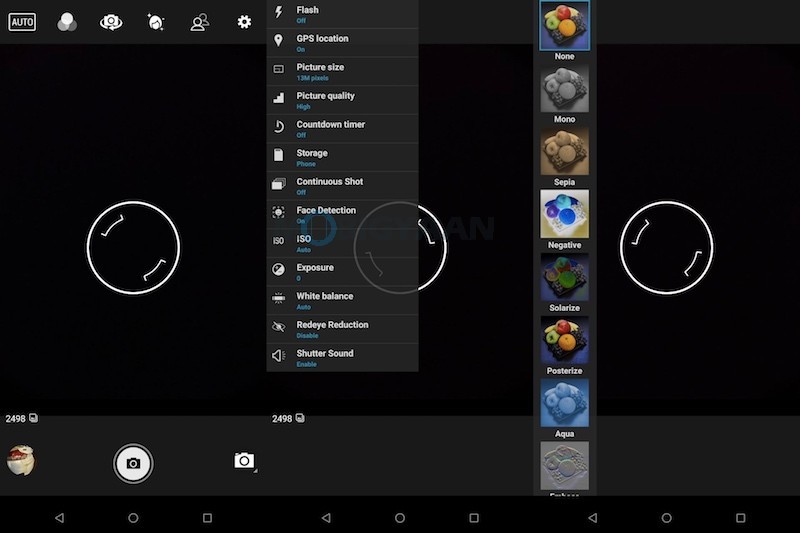
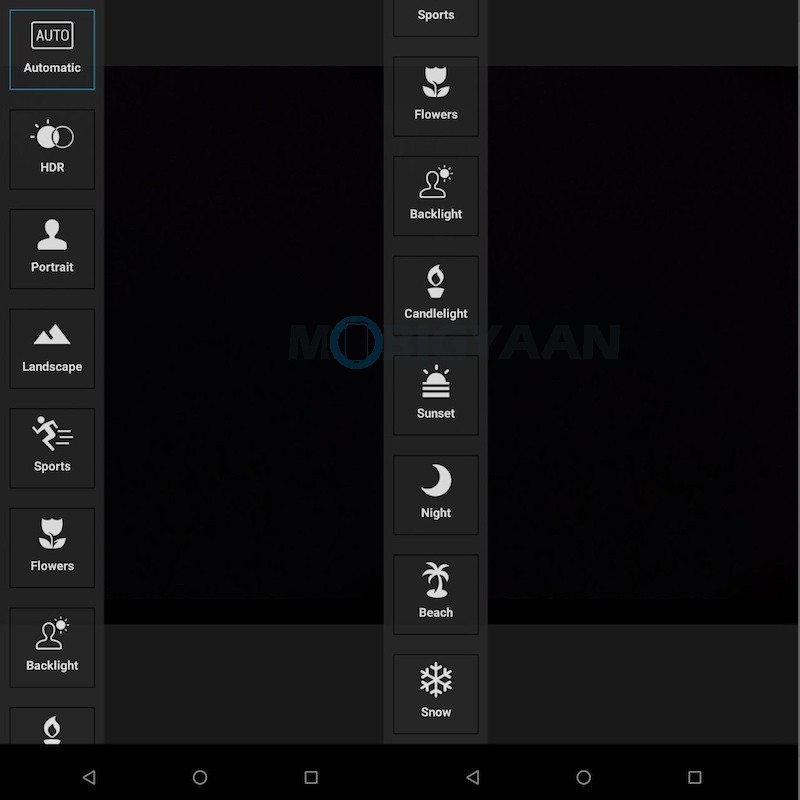
ASUS ZenFone Max Pro M1 Camera Samples
Battery Runtime & Charging
The battery is the primary aspect of the phone, just in case, the ZenFone Max lineup is known for big batteries. ASUS has managed to fit a 5,000 mAh battery in 8.45 mm ZenFone Max Pro M1. The 5,000 mAh battery combined with power-efficient cores and stock interface, lasts up to 2 days with a screen-on-time of about 6 hours on average use.
Out usage was pretty average including social apps like Facebook, Telegram, streaming video on YouTube, as well as offline videos, some use of camera and light gaming all on a single 4G SIM. Here are the battery test results that will guide you through the battery runtimes.
For a large battery, it takes plenty of time to charge, the ZenFone Max Pro M1 with 5,000 mAh battery takes around 2.5 hours to charge it fully from 0% to 100%. It takes 1-hour to reach to ~60% battery from 0%.
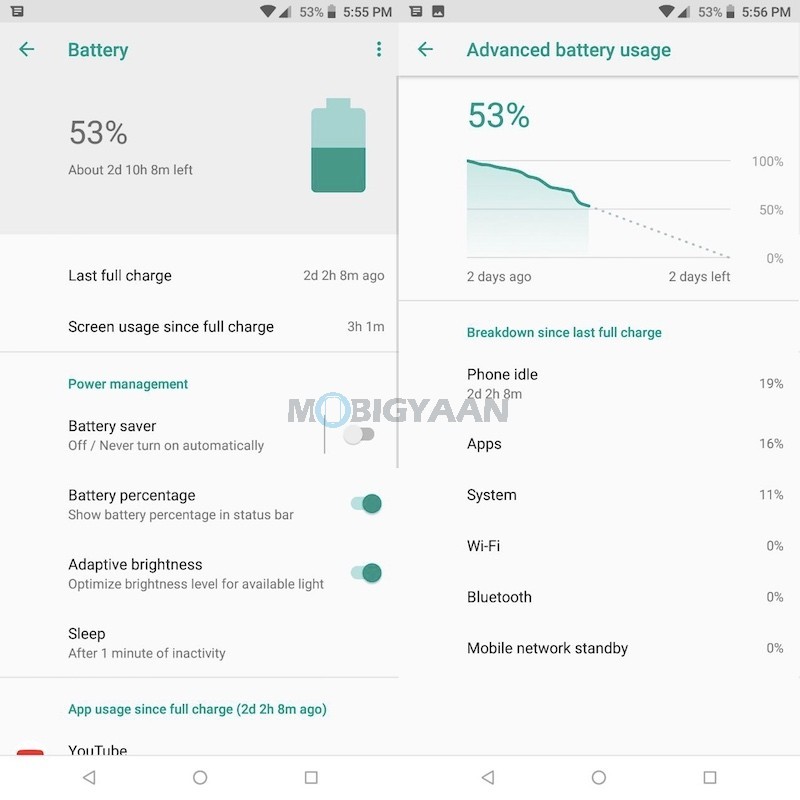
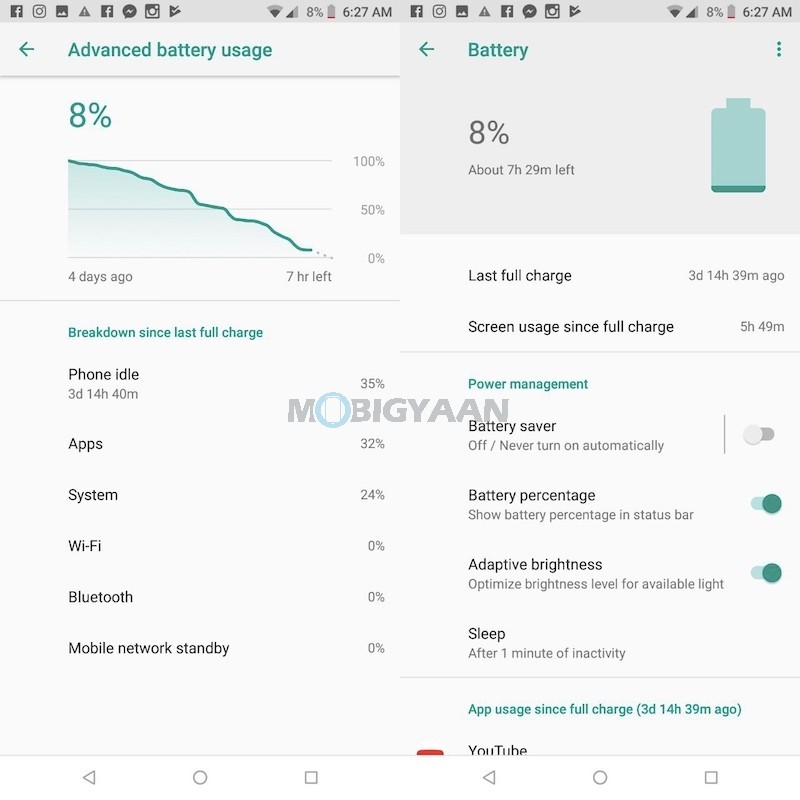
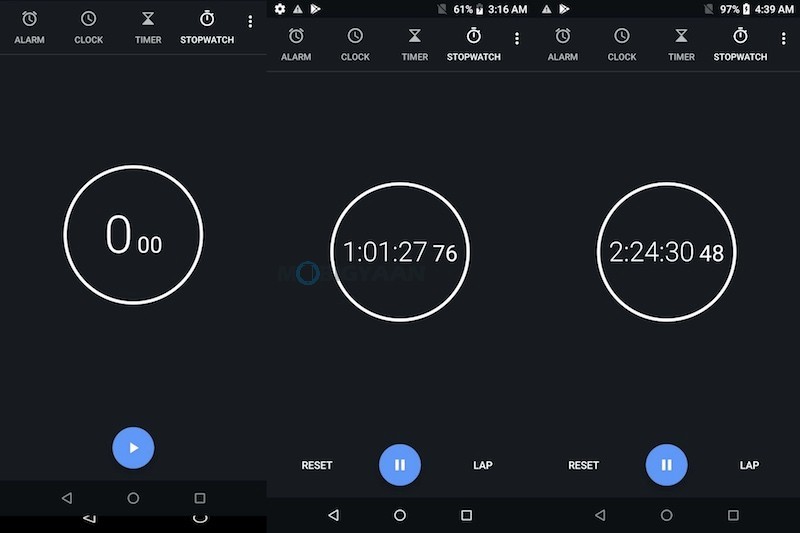
ASUS ZenFone Max Pro M1 Battery Test Results
[table id=149 responsive=flip /]
Verdict
ASUS has almost made its way to acquire the budget segment leaving the well-known budget devices like Xiaomi Remdi Note 5 behind in performance. If we talk about its internals, the ASUS ZenFone Max Pro M1 sports a Snapdragon 636 SoC which is faster than that of several phones including the Motorola Moto X4, Xiaomi Redmi Note 5, Honor 7X, and Honor 9 Lite.
The battery on the ZenFone Max Pro M1 is huge, the 5,000 mAh is capable of surviving about 2 days on a single charge. In addition to the features, the ZenFone Max has got the MaxBox – a cardboard-based passive amplifier accessory that increases the volume hugely.
Then there’s the Android 8.1 Oreo with nearly stock Android interface that’s where the ZenFone Max Pro M1 has an edge. ASUS also claims that the device will be updated two levels above i.e. Android P and Android Q.
The pricing of the phone is kept reasonably good, in fact, you get more for the buck. As of now, this is the only smartphone that comes with Snapdragon 636 SoC and Android 8.1 Oreo at this price. The price of the phone starts at Rs 10,999 for 3 GB RAM and 32 GB storage and adding Rs 2,000 more will get you a 4 GB RAM and 64 GB storage variant.
Having said that, the ASUS ZenFone Max Pro M1 is recommended for budget users who want a smartphone with latest Android, fast performance, and a long-lasting battery life.
Rivals
- Xiaomi Redmi Note 5 Pro (4 GB RAM & 64 GB Storage) – Rs 14,999
- Xiaomi Redmi Note 5 (32 GB) – Rs 9,999
- Honor 9 Lite (32 GB) – Rs 10,999
Strength
- Android Oreo out-of-the-box
- Good Battery Life
- Fast CPU (Snapdragon 636 SoC)
- Large Display | Metallic Build
- Decent Dual Cameras
- Face Unlock
- Dedicated MicroSD Card Support
- Value For Money
Weakness
- Sluggish Camera Interface























